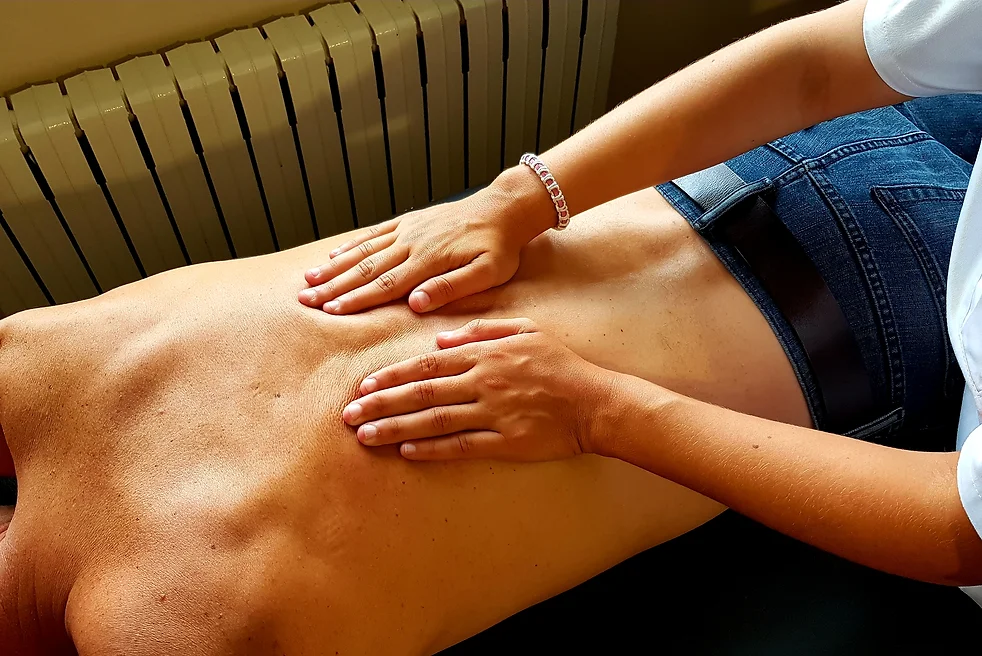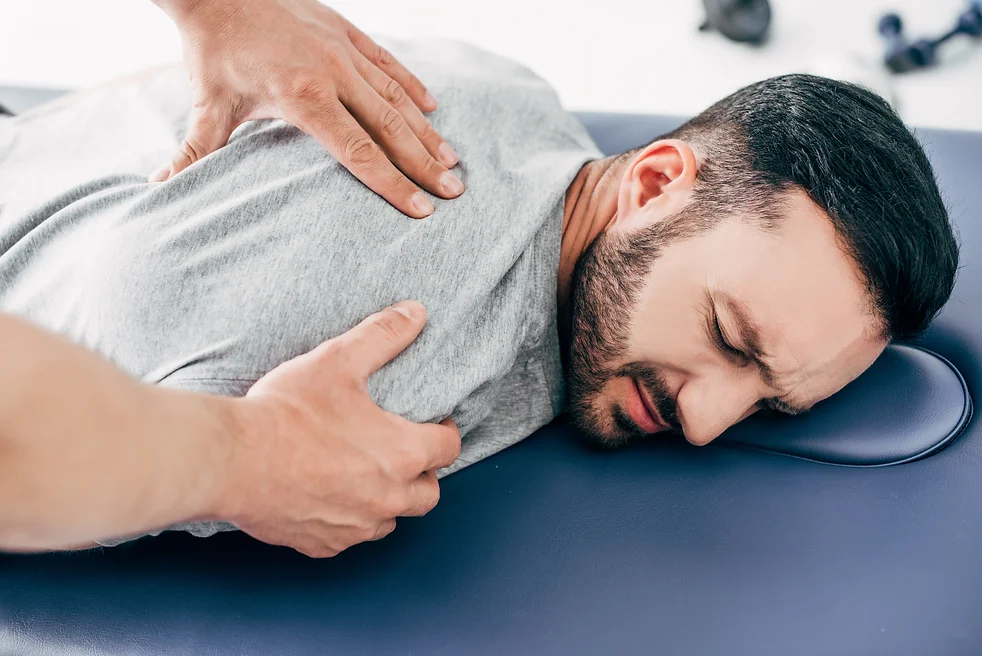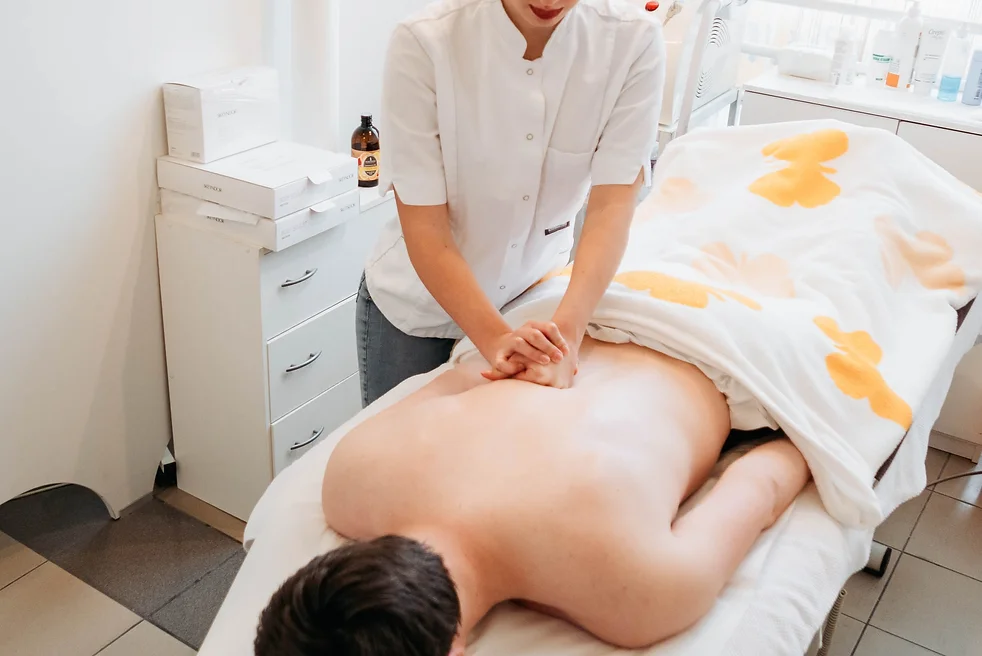Major Bertrand DeJarnette (The Major), a Doctor (chiropractor and osteopath) and Engineer in the 1920s, developed the Sacro-Occipital Technique (SOT). The Major was inspired to develop ways for addressing the Cranium, Pelvis, Extremities, and Organs in addition to simple spinal adjusting.
This research resulted in a way for altering patterns in the body as a whole, rather than simply single body parts. The link between the sacrum and the occiput was the most notable pattern (which became the name of the technique).

The usage of indicators is one of SOT’s key distinguishing factors. Every adjustment is associated with a sign or signal that we use to determine when and where we should modify.
Muscle tension in the knee, for example, may suggest that the pelvis needs to be adjusted, and connective tissue fibres at the base of the skull (known as occipital fibres) may show that different vertebra in the back or spine needs to be adjusted.
This also tells us whether the correction was totally or only partially effective at the next visit. We create a unique adjustment set for each visit based on these factors, listening to the body each time. It takes time to perfect this form of treatment, but it results in a more effective and precise adjustment without the need for x-rays.
SOT is especially interested in the cranial sacral respiratory system. This is a wavelike oscillation in the brain and spinal cord. This motion, however modest, is critical for the regular functioning of the brain and spinal cord, along with the rest of the neurological system and the body.
It works in the same way that breathing air does, with a cyclic tightening and loosening phase. Breathing air in and out or ordinary respiration affects cranial sacral respiratory activity and can be utilised to normalise it. The cranial sacral respiratory mechanism’s normal function is acknowledged as a primary function of life in the body, and it must be normal if all other bodily functions are to be normal. SOT, like other chiropractic procedures, corrects incorrect spinal mechanics as well as any nerve issues that may be present. Back discomfort, headaches, disorientation, and arm and leg pains are just a few examples.
Your SOT practitioner can help normalise organ function in your body using Chiropractic Manipulative Reflex Techniques (CMRT), like high blood pressure, digestive issues, urinary problems, toxicity, female reproductive dysfunction, and so on. The list may go on forever.


It’s important to get rid of the pain. During a SOT adjustment, the patient’s comfort is taken into consideration at all times. However, the primary aim of a chiropractic SOT adjustment is not to eliminate or kill the pain. The true purpose of an adjustment, particularly a SOT adjustment, is to restore normal body function.
The central nervous system, which includes the brain and spinal cord, is the entry. The brain and spinal cord are employed for this since all human body studies have shown that their function is the fundamental function of the body. They also control all of the body’s other functions. As a result, the major purpose is to normalise this function. The pain will lessen once this goal is achieved. However, pain relief is a side effect of restoring normalcy to the cranial sacral respiratory process.
Yes. Any SOT adjustment improves the body’s functioning, resulting in a healthier body with a better form and function. This improvement may be subtle at first, and it may not be visible to the doctor or the patient, but it is there. Because everyone is unique, it is extremely challenging to predict how a patient’s body will respond to treatment.
SOT practitioners are actively involved in both wellness and preventative care, which includes, in addition to chiropractic therapy, proper exercise, nutritious eating, avoiding smoking and excessive alcohol consumption, and other activities that are harmful to your health. Over the years, clinical experience and scientific research have proved that SOT is at the vanguard of health-improving techniques.


No. SOT works in part by situating the body in such a way that it can use gravity and the body’s weight to correct the body. This is a result of the interplay between the body’s unique position and the motion induced by normal breathing. During the adjustment, the patient may get very comfortable and perhaps fall asleep. When adjustment spots are found, there may be some discomfort. Patients usually say that it feels like a “good pain” that is relieving rather than a “bad pain” and that it primarily serves to inform the doctor and patient that a point that needs to be corrected has been discovered.
With professional chiropractors guiding you every step of the way, special exercises, and an excellent mechanism for follow-ups, Falcon Health is the best place you can be that yields successful results. Book an appointment today!
How often should I see a chiropractor?
The frequency of chiropractic visits will depend on your condition and its severity. Your chiropractor will develop a treatment plan that includes a recommended visit schedule.
34 Church Rd, Burgess Hill
RH15 9AE
Mon – Thur | 8:20am – 7:00pm
Friday | 8:20am – 5:30pm
Saturday | 9:00am – 1:00pm